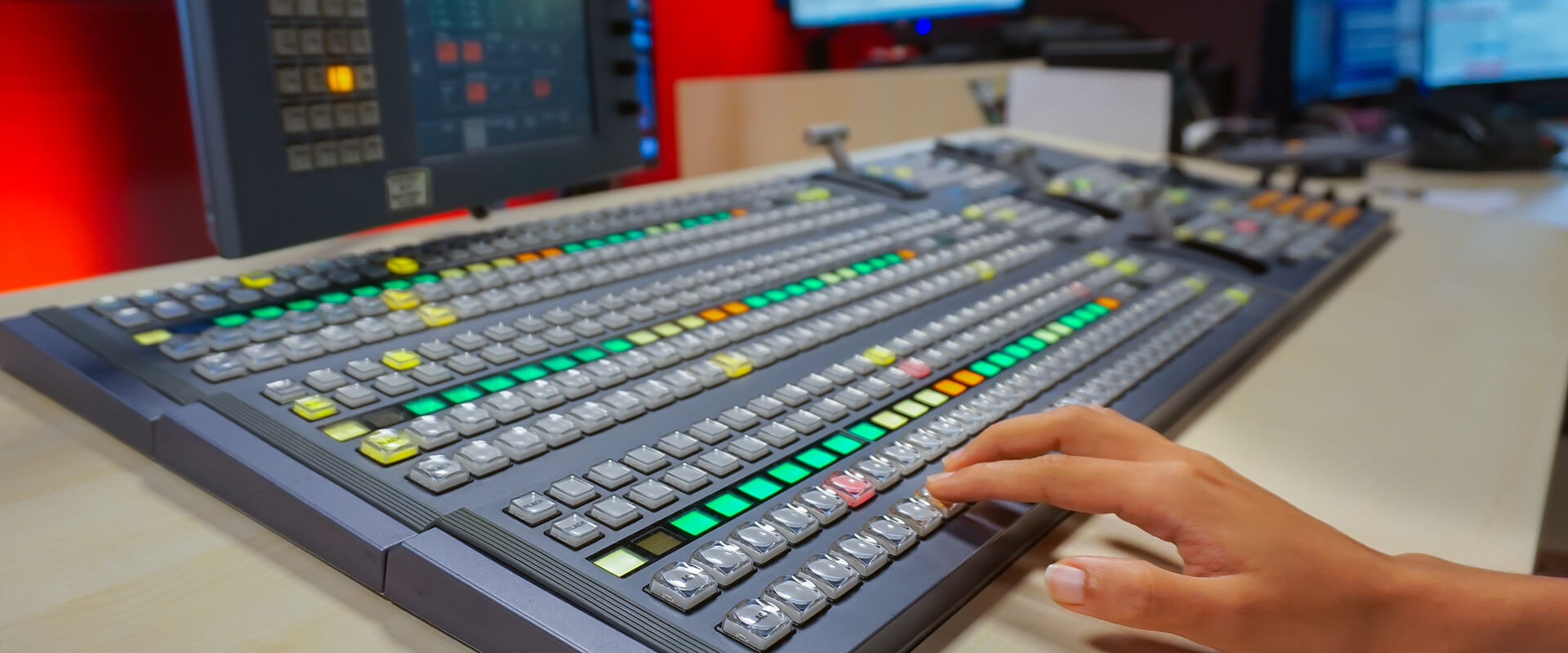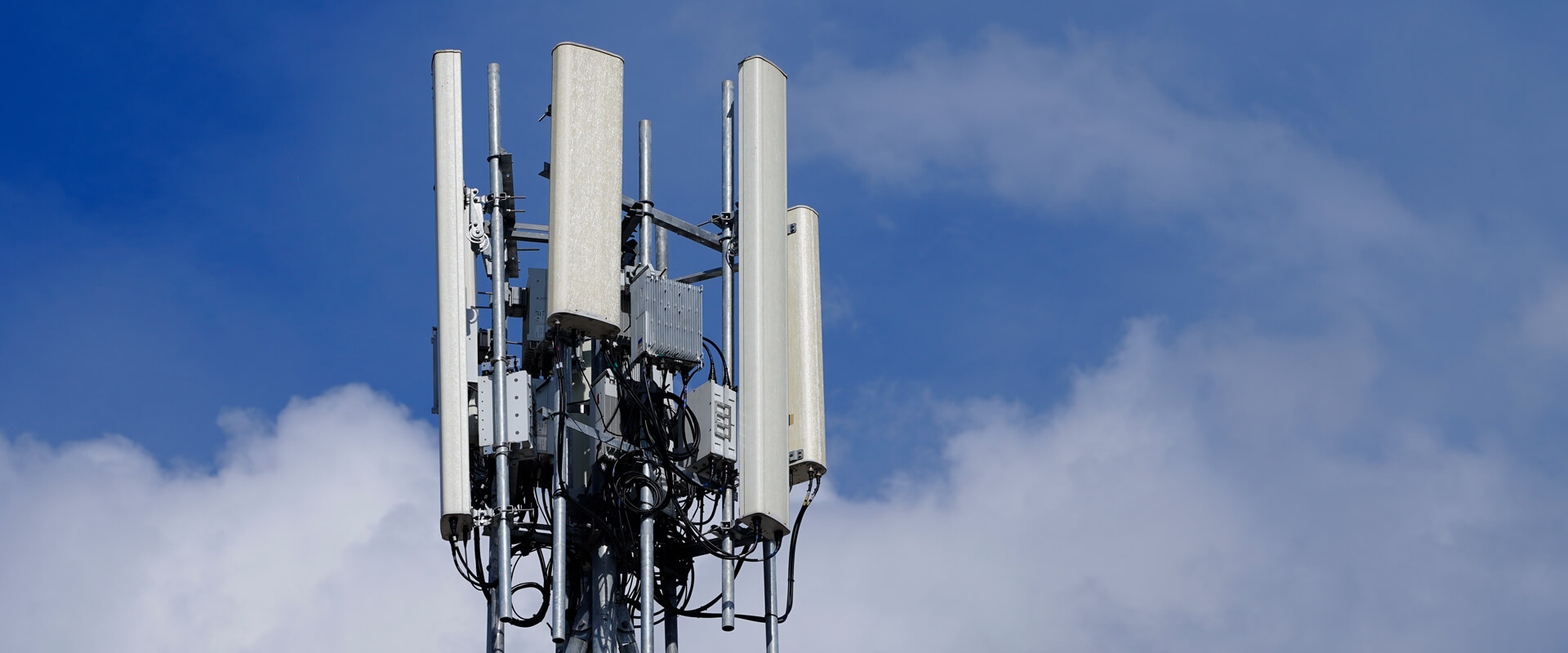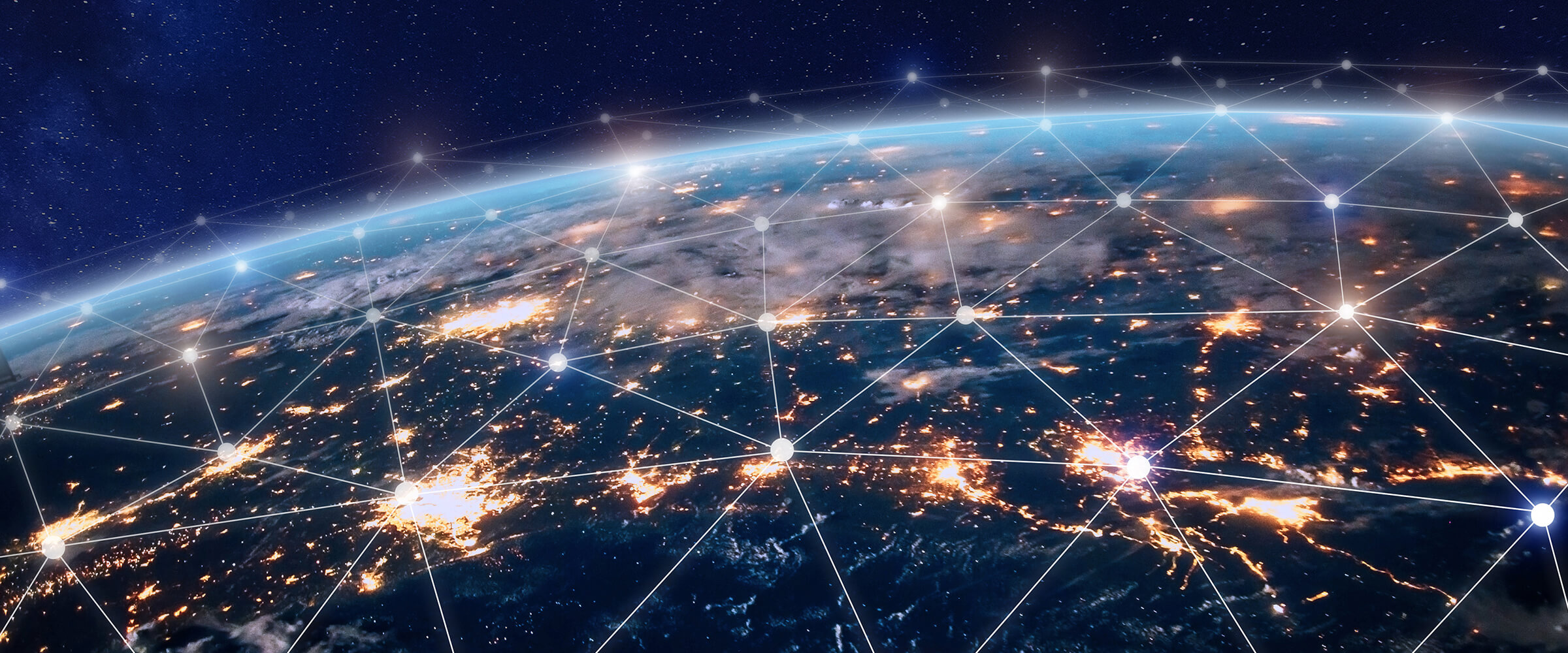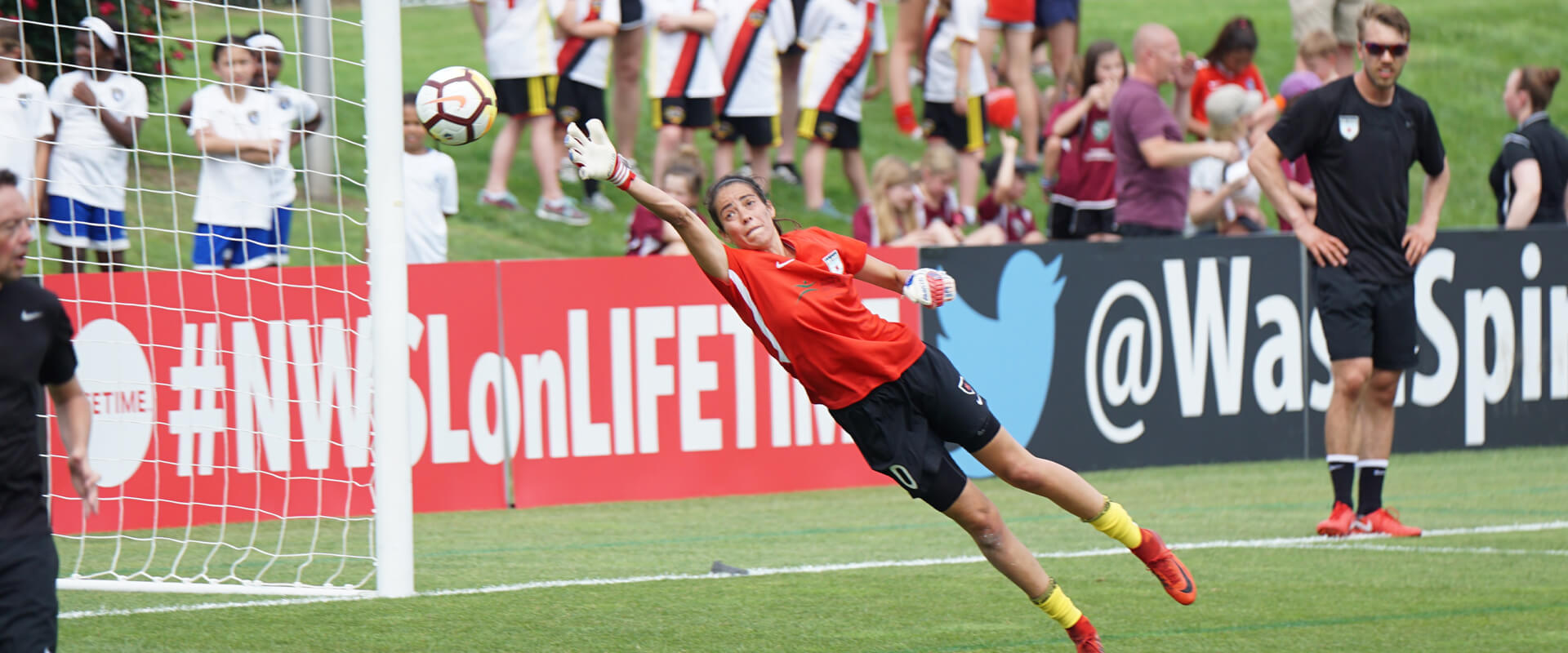.jpg?width=1170&name=REMOTE_PROD_SERIES%20(1).jpg) The workflow that you adopt is maybe the most important decision you will make. Why? Because once you commit, you probably won’t change your workflow for a while.
The workflow that you adopt is maybe the most important decision you will make. Why? Because once you commit, you probably won’t change your workflow for a while.The efficiency of your live production workflow depends on many factors, from the type of technologies you use to the skill level of staff at your disposal. The right mix of resources is crucial to maximising the efficiency of your workflow.
The workflow that you adopt is maybe the most important decision you will make. Why? Because once you commit, you probably won’t change your workflow for a while. It’s a commitment, it’s sticky and it’s intensive to get everyone on the same page (or at least it used to be).
Let’s talk about remote, cloud-based workflows and how they differentiate from a traditional on-site workflow(s). This first blog of this series will cover the fundamentals of remote, cloud-based production workflows, with blogs later in the series going into detail about the technologies available to fuel remote production.
.jpg?width=1920&name=OB_TRUCK_SMALL%20(1).jpg) The inside of a section of an outside broadcast truck.
The inside of a section of an outside broadcast truck.
Broadcast technologies that are focused on Cloud Production are leading the way in expanding the possibilities of content generation while proving they can maintain TV-quality and reduce cost in humans and hardware.
To understand just how efficient a remote, cloud-based workflow can be, we should first look at what is involved in a traditional live production workflow and compare the two.
We want to find out how each type of workflow performs across a number of different criteria, this will help us investigate exactly how the two differ.
Each workflow will be broken down and judged across the following categories:
In each category, we will also give each workflow a rating out of 10. The criteria for the rating will be tailored for each category. In general, a low rating (0/10) is not good, and a high rating (10/10) is great.
Let’s kick off this competition with the traditionalists, the workflow that has been serving live sports broadcasting for generations. The idea is, you take everything you need to site and then send it to your viewers.
First, let’s look at a simple diagram of a traditional live sports production. This diagram depicts a single camera setup using traditional live workflow.
%20(1).png?width=666&name=ligr_brodie1%20(2)%20(1).png) A Simplified example of a traditional live production workflow.
A Simplified example of a traditional live production workflow.
A traditional multi-camera production would look much the same, you would just multiply the number of cameras involved in the production.
This is one category where a traditional live production workflow really differs from a cloud-based one. With the main difference being, that a traditional workflow requires a lot more equipment to be located at the same site as the action that is being broadcasted. Some of the equipment that is required on-site:
Vision Mixer
A vision mixer can come in many forms, ranging from dedicated hardware mixers to software that can run on just a laptop.
 Hardware vision mixer located in a TV control room.
Hardware vision mixer located in a TV control room.
Graphics Solution:
Live sports productions need live graphics, this means you will also be bringing along hardware and software for your live graphics playout. Unless you are settling for the very basic in-built graphics solution that may exist on your vision mixer, in which you could just use the vision mixer for graphics.
Encoder:
An encoder can come in two main forms, a dedicated hardware encoder or a software encoder that is usually in-built into software vision mixers. For best performance, we recommend a dedicated hardware encoder.
While an encoder is needed across both a traditional and cloud-based production workflow, to deliver your on-site vision to the fans at home, the main difference is the number of encoders required.
Without the help of the cloud, you will need a very robust on-site internet connection and a dedicated encoder for each final destination you need to deliver your stream to.
Cameras and other capture equipment:
An area where not much changes between the different workflows are capture devices, they always need to be onsite to capture the action. This includes:
.jpg?width=1920&name=CAMERAS%20(1).jpg) Three cameras with accessories on tripods.
Three cameras with accessories on tripods.
The main drawback to a traditional workflow when it comes to equipment is that you are required to bring everything to site. While TV-level traditional production workflows have matured to be able to efficiently handle large amounts of on-site equipment, this does require a highly-skilled workforce to handle the setup process.
For simple productions requiring just one camera - having to have a vision mixer, a graphics solution, multiple encoders and more on-site, this is unviable. And this is where the traditional workflow really shows its downfall when it comes to equipment.
In equipment, the traditional workflow gets a rating: 5/10
People is a hard one and depends on how well you want to execute certain functions and how manual those functions are. Let’s take graphics as the perfect example - if you want to produce professional-level graphics with match statistic integration, and on-screen sponsorship display, you will require:
That's two people already.
You then have a camera operator and a director/vision mixer. Ideally, you would also have a stream technician, however, if it’s a single camera live stream, the director can double as that role. We now have another two people, a total of four! And this is only for a simple, single-camera production.
 Camera operator capturing a basketball game.
Camera operator capturing a basketball game.
With just that simple example alone, you can get a sense of how the number of people needed can quickly increase, the bigger your production gets.
People, the traditional workflow gets a rating: 6/10
With only just factoring the last two categories we have covered, you may already have a sense of complexity the traditional workflow can attract.
As your production grows or needs to improve in quality so does the amount of equipment and people required on-site. Resulting in big jumps in complexity.
The more complexity, the more burdensome a traditional workflow becomes, in particular at scale.
In complexity, the traditional workflow gets a low rating: 3/10
Going live means that every action you take, every piece of equipment involved cannot miss a beat. With an audience of many watching everything you output, there is no going back, there is no editing. This is why it is important to consider the Points of Failure.
The more connections, hardware and connections involved, the more complex your setup is and the more complex your setup is, generally means the more potential points of failure you can have. Here are some examples:
These are all failure points.
Traditional, on-site workflows result in more hardware, more connections, and more people that all need to get and be set up on-site.
A traditional workflow can result in a high number of points of failure, resulting in a low rating: 3/10
One of the biggest issues with on-site production, when attempting multi-point encodes, is having a reliable on-site internet connection with enough available bandwidth.
Trying to stream to three different outputs/streaming platforms from the sports ground via a cellular connection, while a crowd is all around on their smartphones; just getting out one stream to one location can be tough enough. Add two more streams, it becomes next to impossible.
 Cellular tower.
Cellular tower.
Then you have the cost of cellular data of trying to stream three separate video streams from on-site to their final locations.
In some circumstances, you may get lucky and there will be a reliable and fast on-site internet connection at the venue. However, if you are travelling between different venues week to week, you cannot rely on this utility to be available.
Because of the large amounts of on-site bandwidth required for multi-point streaming with a traditional workflow, we are giving a rating: 2/10.
In general, live sports production always requires some skilled specialists to operate certain equipment and undertake certain processes. These can include:
Why? Some vision mix software can be quite complex, similar to photoshop to a non-designer. Live graphics software is exactly the same.
As mentioned above, some level of knowledge is always required to stream sports, the difference with on-site production is you need them all on-site.
Resulting in a rating 7/10
This might be the biggest category when comparing on-site vs remote production.
While on-site workflows are fine for complex multi-camera live streams at one location, one game at a time, they do not scale with any efficiency or economy across multiple locations or simultaneous games.
If you want to replicate your stream in an on-site workflow, you need to buy every bit of the same equipment twice. You need to have double the production crew, double the streaming capacity, double the knowledge, it is double the failure points. There is no economy of scale to be seen.
Rating: 1/10
An on-site production workflow is only as adaptable as the equipment, people, and bandwidth you have on-site. That is to say, you can only adapt as far as you had planned and as far as your redundancy/backup plans will take you with your abilities on site.
While you will have prepared appropriately, and often nothing will go wrong; you are still in a position of weakness if things do go wrong - with limited ability to adapt while being on-site, away from extra equipment or skilled staff to intervene.
Rating 5/10
Traditional production workflows have been serving the live production industry for many decades, however, when you break it down it really highlights the barriers of entry for new and simple productions to get started with live streaming.
Let’s see if a remote, cloud-based production workflow is any better?
As the world becomes better connected and bandwidth limitations are removed, we are seeing more and more technologies making the move to the cloud.
Vision mixers, graphics, the master control room, live commentary and more; almost all functions of live production now have a level of capability that can be powered by the “cloud”. This capability is enabling, what we call, Remote Production.
Like we did above with a traditional, on-site production workflow, we will rate remote production against each category we set out earlier in the blog.
Take a look at the diagram below. It shows what a simple, single-camera remote production may look like.
%20(1).png?width=5152&name=ligr_brodie2%20(2)%20(1).png) A workflow of a single-camera live production, using the cloud and LIGR.Live for the graphics.
A workflow of a single-camera live production, using the cloud and LIGR.Live for the graphics.
The key difference - compared to the diagram we showed earlier for a traditional workflow - is that there is much less equipment on-site and more functions that are handled “virtually” in the cloud.
Disclaimer: if you were to use the “cloud” for a multi-camera production, you may also need a vision mixer located on-site.
Immediately by looking at the single-camera diagram above, you can see we have removed from on-site, the following:
This is the equipment you no longer need to bump-in, power or have on-site staff for. The benefit of the cloud is that it can be accessed from anywhere in the world with an internet connection.
A very significant benefit of moving your multi-point stream distribution to the cloud is that you have gone from three encoders on-site, that all need robust internet connections, to one encoder.
Already you can start to see just how much more efficient this remote, cloud-based production is vs a traditional production when it comes to equipment.
What about live commentary you may ask? Well, not to worry, there are cloud-based solutions for that as well. Meaning, your live commentators can be located anywhere around the world and still have their live commentary inserted into the stream with no sync issues. The viewers at home will not know the difference.
What about Multi-Camera Productions?
You may be wondering about a multi-camera production, how does this work with the cloud? The answer is, very easily.
 Camera operator capture a rugby match.
Camera operator capture a rugby match.
In most cases, you will want to add a physical vision mixer to your on-site presence to connect all your cameras too. However, you will still only need to send one final output from that mixer to the cloud, to then distribute your stream to as many stream platforms as you need. Compared to a traditional workflow, you are still drastically reducing the amount of bandwidth needed.
With graphics and commentary still located remotely, this means no travel or bump-in required to facilitate those functions.
The efficiencies gained as a result of less on-site equipment, gives remote production a rating of 7/10
For a single camera production that is controlled manually, will still result in a total of 4 people to be involved in the production. The difference, not all of these people need to be on location.
The camera operator will still need to be on-site and will stream their vision directly to the cloud where the rest of the production team can monitor from anywhere in the world.
Your commentary team can also be on-site, but nothing more is needed than a microphone, as they can just plug directly into the camera and overlay on the vision that way.
Cloud technologies are also pioneering automated production technology. For instance, Live Graphic Systems (LIGR) is a 100% cloud-based live graphics solution that has a function that can completely automate the operation of live graphics on your broadcast.
In a future blog post of this Remote Production series, we will talk more about the exact technologies that are changing the way live production is achieved, using the power of the cloud.
When it comes to a manually controlled production, remote production does result in the same number of people. However, automation can change this.
We will rate remote production the same rating as a traditional workflow: 6/10
The removal of multiple on-site encoders immediately and drastically reduces the complexity of your production. Not only do you have less equipment, but your internet bandwidth requirements are 1/3rd of what they were with a traditional workflow.
While remote production workflows still require vision mixing, audio, and live graphics; these are moved to the cloud. No longer do you need to bring those things to the site.
Some may say that having some of your workflow in the cloud and some on-site adds further complexity, however, we beg to differ. Segmenting functions and moving them into stable, off-site environments, where you are prepared for all scenarios, is a move that reduces the complexity of the overall production.
While the cloud may make life a little easier, live productions are still complex. Remote production gets only a one-point lead compared to a traditional workflow in this category. Rating: 4/10
Remote productions excel when it comes to redundancy and ultimately fewer points of failure. By removing hardware and people from on-site, you reduce the number of points of failure.
How?
Cloud technology is mostly powered by robust data centres operated by some of the biggest companies in the world e.g. Amazon and Google.
 A data centre where cloud-based services are hosted.
A data centre where cloud-based services are hosted.
These data centres are located in secure, controlled environments and monitored around the clock. The companies that operate these services have guarantees their servers will always basically be running.
Compared to traditional, remote production takes a big lead in this category, with a rating of 8/10
We have already touched on this, be we need to reiterate. Remote production drastically reduces the amount of on-site bandwidth needed to send your stream to the world.
With one single live video feed sent to a cloud vision mixer or MCR, you can effectively distribute this single stream to a multitude of streaming platforms or endpoints simultaneously. This is achievable without requiring any extra bandwidth on site.
How? You might ask. You are letting the cloud do the distribution for you. It takes your single video feed from on-site and uses the robust internet connection of a data centre to distribute your live content to every platform it needs to be delivered to.
 Graphical representation of global distribution via the internet.
Graphical representation of global distribution via the internet.
An added benefit of cloud distribution is, of course, redundancy. If your internet connection drops out on-site and you are no longer sending vision - gone are the days of complete live stream dropouts. You can now program the cloud-based tech to “fallback” to pre-recorded content or even just a still image if the video feed from on-site drops out.
This means the viewers watching your stream won’t suddenly see a message like “stream finished” or “stream error” in the event of a drop-out; the show goes in with content you have pre-programmed to run in this kind of event.
We have only touched on cloud-based tech in this example, however, the same benefits can be achieved if you have set up your own private remote control room that you distribute your stream from.
The key here is that you are removing the dependency on an on-site internet connection.
Remote production has a huge lead in this category, with significantly less on-site bandwidth required, it attracts a rating of 9/10
The knowledge required is dependent on the types of technologies you use to complete your remote production workflow.
There are solutions that are complex to use, designed for professionals to achieve very unique and tailored results. And then there are easy-to-use solutions, that are designed to have you up and running in minutes, with minimal effort or skill-level required.
Where cloud technologies stand-out, there are solutions purposely designed to be easy-to-use so that anyone can achieve TV-quality results, effortlessly. LIGR.Live is a perfect example of this, a 100% cloud-based, templated and automated live graphics solution.
 LIGR.Live's user interface, showing the graphic preview function.
LIGR.Live's user interface, showing the graphic preview function.
Thanks to the selection of easy-to-use cloud-technologies that are available to service remote productions, there is the potential to avoid any learning curve; resulting in a rating of: 7/10
This is truly where remote production workflows in combination with cloud production technologies and further, AUTOMATED cloud technologies, shines.
When reviewing the requirements of a single game at a time, there is maybe not enough of a true difference and advantage between an on-site/traditional production and a remote/cloud production.
When talking about producing an entire competition, with multiple locations involving simultaneous games, remote production takes all on-site productions to the cleaners.
To truly understand the difference, please read this article breaking down the difference between remote and on-site productions for single-camera live streams.
Remote production takes the cake with 10’s across the board. Rating: 10/10
A remote production rates well on the adaptability scale. As your vision mixer and graphics are hosted in the cloud, and you can guarantee that if you lose the stream from on-site, that your live stream won’t go down. You are in a strong adaptive position.
If things go wrong with your camera or encoder on-site, you can fill airtime with graphics, TVC’s and more.
Having functions of your workflow cloud-based gives you the ability to adapt and pivot against on-site issues. You simply don’t have this ability with completely on-site production.
Rating: 9/10
On-Site / Traditional Production Workflow - Rating: 32/80
Off-Site / Remote Production Workflow - Rating: 60/80
When comparing the two workflows, there is a clear winner, in particular for single-camera live streams. The benefits of remote still apply to multi-camera live streams due to the nature of adaptability, network stability, failure points and equipment.
Remote, cloud-based, automated workflows, is the future of production. Specifically for sub-elite and grassroots, high school and college sports broadcasts that value efficiency and sustainability, simply because they have to. There is no budget to spare, and any technology and workflow that enables quality, sponsor integration while minimising prior knowledge, learning curves, hardware and human costs will succeed and be a part of democratising live sports content globally.
 Football goalkeeper diving to stop the ball.
Football goalkeeper diving to stop the ball.
At LIGR, being a remote, 100% cloud-based and automated technology, we are big proponents of remote workflows and truly believe a greater quality at a greater scale can be achieved adopting and committing to remote workflows.
To conclude, here is a slightly more detailed diagram of a remote production workflow. We call this “The Virtual Sports Stack”.
 A diagram showing a typical remote production workflow or "Virtual Sports Stack"
A diagram showing a typical remote production workflow or "Virtual Sports Stack"
The above diagram displays the “Virtual Sports Stack” as coined by our good friend, Ben Reynolds, CEO and Founder of Spalk, the virtual sportscasting studio, detailing the future of remote broadcasting and cloud production of the sports broadcast world.
Subscribe to our blog to be notified when the next blog of this remote production series is released!

|